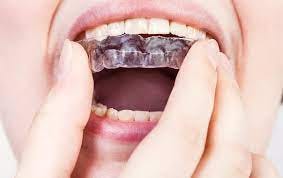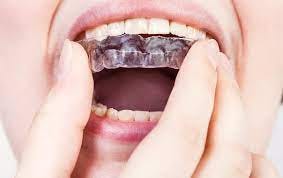What Materials Are Mouthguards Made Of?
If you're wondering, what materials are mouthguards made of, you're not alone. Mouthguards are essential for protecting teeth during sports, preventing nighttime grinding, or managing jaw pain. The material used directly impacts comfort, protection, and durability. Whether you're choosing an over-the-counter guard or getting one custom-made by a dentist, understanding the materials can help you pick the best one for your needs.
Common Materials Used in Mouthguards:
Mouthguards are crafted from various types of plastics and polymers, each offering different benefits.
Ethylene vinyl acetate (EVA): A flexible and soft plastic used in many boil-and-bite and custom guards
Thermoplastic: Used in stock and boil-and-bite guards, it softens with heat to mold to your teeth
Polyurethane: Known for durability and impact resistance, often used in high-end sports mouthguards
Acrylic: A hard plastic used mostly in nightguards for bruxism, offering a rigid structure
Silicone-based materials: Sometimes used for extra comfort, though less common due to low durability
Dual-laminate materials: Combine soft and hard layers for both comfort and strength
The choice of material often depends on the type of protection needed and the user's comfort preferences.
How Material Affects Comfort and Fit?
The material not only determines how the mouthguard functions but also how it feels in your mouth.
EVA and thermoplastics are soft, making them more comfortable for long-term use
Hard acrylic offers stability but may feel bulky for some users
Dual-layer guards provide a cushioned inside and a durable outside for balanced performance
Materials should be non-toxic, BPA-free, and safe for oral contact
Softer materials are ideal for light grinders or general sports use
Harder materials are best for heavy bruxism or professional-level contact sports
A well-chosen material helps ensure the mouthguard stays in place without discomfort.
Material Choice Based on Mouthguard Type:
Different types of mouthguards require different materials to perform their specific functions effectively.
Stock mouthguards are made from low-cost thermoplastics and offer basic protection
Boil-and-bite guards use EVA, which molds to your teeth after being heated
Custom mouthguards from a dentist often use dual-laminate or EVA for precision and comfort
Nightguards for teeth grinding typically use acrylic or dual-laminate for long-term wear
Sports guards may include impact-absorbing polyurethane for added safety
TMJ mouthguards need materials that provide both structure and cushion
Matching the material to the purpose ensures optimal protection and user experience.
Pros and Cons of Different Materials:
Each material used in mouthguards comes with its own set of advantages and limitations.
EVA: Comfortable, moldable, affordable, but wears out faster
Thermoplastic: Easy to use at home, but not as durable as custom options
Polyurethane: Strong and shock-absorbent but may be less comfortable
Acrylic: Long-lasting and rigid, ideal for bruxism, but can feel bulky
Silicone: Soft and gentle but not as supportive or durable
Dual-laminate: Offers the best of both worlds, but can be more expensive
Knowing these differences can help you make an informed decision when selecting a mouthguard.
Safety and FDA-Approved Materials:
It’s essential that Best Mouthguards Treatment be made from materials that are both safe and effective.
Always choose BPA-free and phthalate-free materials to avoid toxic exposure
Look for products that are FDA-approved or dentist-recommended
Avoid cheap imports with unknown or untested plastics
If you have allergies, make sure the material is latex-free
Reputable brands and dental professionals use high-quality, medical-grade materials
Mouthguards used by children should be especially scrutinized for safety standards
Quality materials don’t just offer better performance—they protect your overall health too.



